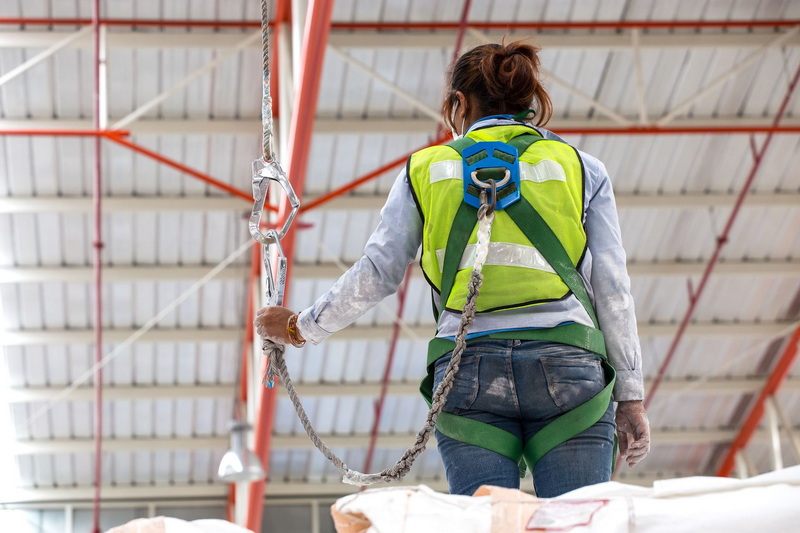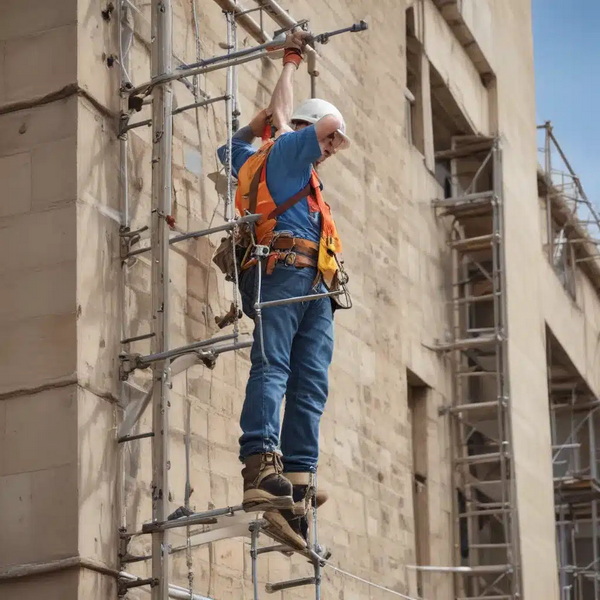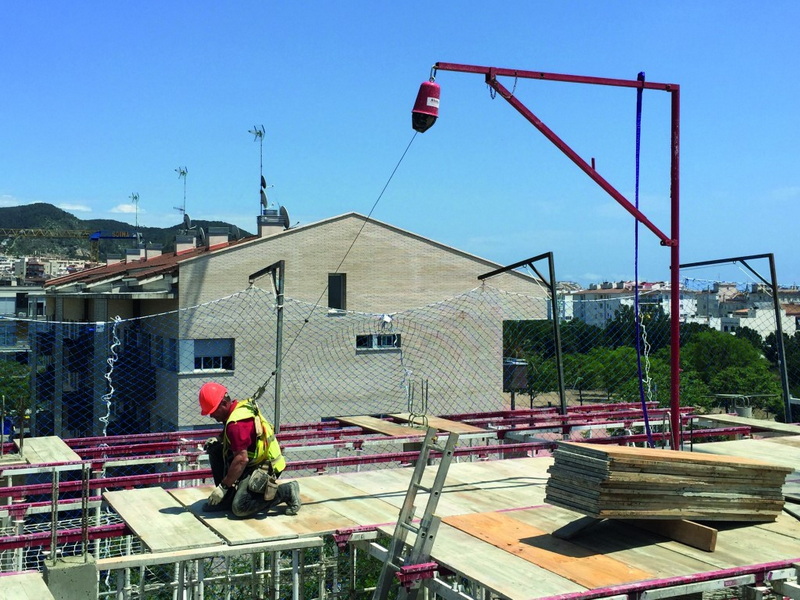Content Menu
● Introduction to Fall Arrest Systems
● Components of a Fall Arrest System
● Fall Arrest Systems in Scaffolding
>> Guardrail Systems
>> Personal Fall Arrest Systems (PFAS) on Scaffolding
● Choosing the Right Fall Arrest System for Scaffolding
● Training and Maintenance
● Advanced Fall Arrest Technologies
>> Smart Harnesses
>> Self-Retracting Lifelines (SRLs)
● Legal and Regulatory Framework
● OSHA Standards for Scaffolding
● Best Practices for Implementing Fall Arrest Systems
● Conclusion
● FAQ
>> 1. What are the primary components of a fall arrest system?
>> 2. How does a personal fall arrest system (PFAS) work on scaffolding?
>> 3. What is the difference between active fall restraint and active fall arrest?
>> 4. Why are guardrails important in scaffolding?
>> 5. What training is required for using fall arrest systems on scaffolding?
● Citations:
Fall arrest systems for scaffolding are critical components in ensuring the safety of workers operating at heights. These systems are designed to stop a fall in progress, preventing serious injury or death. In this article, we will delve into the mechanics of fall arrest systems, their components, and how they are used in scaffolding environments.

Introduction to Fall Arrest Systems
Fall arrest systems are part of a broader category of fall protection measures, which also include fall restraint and fall guarding. Fall restraint prevents workers from reaching the edge of a fall hazard, while fall guarding, such as guardrails, prevents workers from entering a fall hazard area altogether. However, when these measures are not feasible, fall arrest systems become essential.
Components of a Fall Arrest System
A typical fall arrest system consists of four primary components:
1. Anchorage: This is the secure point to which the fall arrest system is attached. It must be capable of withstanding significant forces, typically at least 5,000 pounds per user.
2. Bodywear: This usually includes a full-body harness designed to distribute the forces of a fall across the body, reducing injury.
3. Connector: This connects the harness to the anchorage. Common connectors include lanyards or self-retracting lifelines (SRLs).
4. Deceleration Device: This is crucial for absorbing the energy of a fall, reducing the impact on the worker. Examples include shock-absorbing lanyards or SRLs.
Fall Arrest Systems in Scaffolding
Scaffolding presents unique challenges for fall protection. According to OSHA, scaffolds more than 10 feet above a lower level require fall protection, which can be achieved through guardrails or personal fall arrest systems (PFAS).
Guardrail Systems
Guardrails are a form of passive fall protection, acting as barriers to prevent falls. They must be installed along all open sides and ends of scaffolding platforms, with toprails capable of withstanding at least 200 pounds of force. While guardrails are effective, they are not always feasible, especially when working near edges or in areas where guardrails cannot be installed.
Personal Fall Arrest Systems (PFAS) on Scaffolding
When guardrails are not feasible, PFAS become necessary. These systems include harnesses, lanyards, and anchor points. Workers can use either active fall restraint or active fall arrest systems:
- Active Fall Restraint: This method involves using a lanyard that is too short to allow a worker to fall off the edge of the scaffold. It prevents falls from occurring in the first place.
- Active Fall Arrest: This involves using a longer lanyard or SRL that allows a worker to fall but arrests the fall mid-air, preventing impact with the ground.
Choosing the Right Fall Arrest System for Scaffolding
Selecting the appropriate fall arrest system for scaffolding involves several considerations:
- Anchorage Options: Finding suitable anchor points is crucial. This might involve using nearby structures or ensuring the scaffolding itself can support the forces of a fall.
- Distance from Hazards: The system must be chosen based on the distance from potential hazards below or nearby.
- Type of Work: Different types of scaffolding (e.g., suspended vs. supported) require different approaches to fall protection.
Training and Maintenance
Proper training in the use and maintenance of fall arrest systems is essential. Workers must understand how to correctly wear and connect their equipment, as well as how to inspect it for damage. Regular inspections should check for signs of wear, damage, or corrosion on all components of the fall arrest system.

Advanced Fall Arrest Technologies
Recent advancements in fall arrest technology include more sophisticated SRLs and smart harnesses that can detect falls and alert emergency services. These innovations enhance safety by providing real-time monitoring and faster response times in case of emergencies.
Smart Harnesses
Smart harnesses integrate sensors that can detect when a worker is in a fall situation. These sensors can automatically send alerts to emergency responders, ensuring a quicker response and potentially saving lives.
Self-Retracting Lifelines (SRLs)
SRLs are designed to automatically retract when not in use, keeping the line taut and reducing the risk of entanglement. They also provide a consistent fall distance, which is crucial for preventing impact with lower surfaces.
Legal and Regulatory Framework
In the United States, the Occupational Safety and Health Administration (OSHA) sets standards for fall protection in scaffolding. Employers must ensure that all scaffolding meets these standards, including the use of fall arrest systems when necessary.
OSHA Standards for Scaffolding
- 29 CFR 1926.451: This standard outlines the general requirements for scaffolding, including fall protection measures.
- 29 CFR 1926.501: This standard specifically addresses fall protection in construction, emphasizing the need for fall arrest systems when guardrails are not feasible.
Best Practices for Implementing Fall Arrest Systems
Implementing fall arrest systems effectively requires careful planning and adherence to best practices:
- Regular Inspections: Regularly inspect all components of the fall arrest system to ensure they are in good condition.
- Proper Training: Ensure all workers are trained in the correct use and maintenance of fall arrest equipment.
- Clear Communication: Ensure that all workers understand the risks associated with scaffolding work and the importance of fall protection.
Conclusion
Fall arrest systems for scaffolding are vital for ensuring worker safety at heights. By understanding the components and applications of these systems, employers can provide a safer working environment. It is crucial to adhere to OSHA guidelines and ensure that all workers are properly trained in the use of fall arrest equipment.

FAQ
1. What are the primary components of a fall arrest system?
A fall arrest system consists of four main components: anchorage, bodywear (such as a harness), connector (like a lanyard), and deceleration device (to absorb the impact of a fall).
2. How does a personal fall arrest system (PFAS) work on scaffolding?
PFAS on scaffolding involves attaching a harness to an anchorage via a lanyard or SRL. This system arrests a fall if it occurs, preventing impact with the ground.
3. What is the difference between active fall restraint and active fall arrest?
Active fall restraint prevents a worker from reaching the edge of a fall hazard by using a short lanyard, while active fall arrest allows a fall but stops it mid-air using a longer lanyard or SRL.
4. Why are guardrails important in scaffolding?
Guardrails act as a barrier to prevent falls from scaffolding platforms. They are a form of passive fall protection and must be installed on all open sides and ends of scaffolds more than 10 feet above a lower level.
5. What training is required for using fall arrest systems on scaffolding?
Workers must receive training on the proper use, inspection, and maintenance of fall arrest equipment. This includes understanding how to correctly wear and connect the equipment.
Citations:
[1] https://www.paramount.com/sites/g/files/dxjhpe226/files/2023-07/Toolbox%20Fall%20protection%20on%20Scaffolding.pdf
[2] https://www.youtube.com/watch?v=1DNj7pY0f9w
[3] https://www.mdpi.com/1660-4601/17/3/1107
[4] https://masonrymagazine.com/blog/2023/11/14/4-things-to-know-about-fall-protection-and-scaffolding/
[5] https://www.youtube.com/watch?v=UCnLQmzAtBk
[6] https://patents.google.com/patent/WO2019144468A1/zh
[7] https://www.scaffoldingsolutions.com/services/suspended-scaffolding/fall-arrest-equipment/
[8] https://www.safetyvideos.com/Suspended_Scaffolding_Training_Video_p/c18.htm
[9] https://en.wikipedia.org/wiki/Fall_arrest






















